Quite a few things have actually surprised me about Mexico, mainly just how expensive it is. Guide books would have you believe that it is 1/3 less than the US, but in terms of budget travelling it is as expensive, if not more so. And it’s the accommodation that’s the main outlay, but not just the cost, but the standard of what you get for the price you’ve paid. For instance, in August you will struggle to get a double room in the Yucatan for less than US $35, which is about what you’d pay in the United States. The difference is that in the US you’ll get a clean double room with two beds, fridge, coffee maker and air conditioning. In the Yucatan you’ll get a dirty, mildew riddled room complete with disgusting beds, rock solid pillows, zero water pressure and a fan so loud it seems like your ceiling is about to take off. Want somewhere clean and resembling decent the expect to shell out upward of $60 per night minimum and that is if you’re lucky, for somewhere like a $30 US equivalent room then you’ll need around $80 per night minimum. For that very reason I have rented an apartment for a week in Playa Del Carmen where we will satellite out into the surrounding region
Costs for food and travel are what we expected and typically, a 3 hour bus journey comes in at about $6 with kids being half price. A bottle of water is about $0.50 and 4 cans of warm beer about $5. In trying to maintain a healthy, balanced and frugal diet we have swapped Denny’s breakfasts of hash browns, fries and huge slabs of ham for a banana and some bread for about $0.10 each, with a taco being about a dollar for lunch and then dinner coming in at about $4 each. For that we are eating healthily and well. Talking about money, it also also surprised me how few places take dollars. I say few, I should say how absolutely no where takes dollars despite what I had read. Peso is king in Mexico and the dollar is like the poor cousin no one wants to know.
Another thing which has surprised me, and is probably borne through ignorance, but completely unexpected; no one speaks English. Taxi drivers, bus drivers, hoteliers, even the dudes at McDonald’s, we’ve been in Mexico a week now and not met a single person that speaks even a basic grasp of English. Which isn’t a bad thing, as it means I’ve had to improve on my Spanish skills and quickly. When we first rocked up I could knock out a buenos dios when buying croissants, knew the difference between adulto and niño when buying tickets and could count to ten. Within a week I am firing off buenos nachos for a laugh, can count beyond a hundred and understand a lot more than I can actually speak. In short, we get by. But it completely blind sided me that no one would speak English.
I also expected to come to Mexico and get completely hustled, that hasn’t happened. And pretty much no one bothers you at all. Occasionally some tash riddled Amigo will try flogging you a hammock, but is easily swatted with a simple “no gracias”.
We rocked up into Merida which is the largest city in the Yucatan and home to about 100,000 people as well as some of the hardest mosquitoes we have ever come across. So hard in fact that they laugh in the face of DEET and are the reason behind some fifty or so bites across my entire body. The kids have about ten bites between them, with Charlie atop the leaderboard. The reason is simple, Mexicans haven’t quite got round to building ceilings or rooftops on their hotels meaning you have a courtyard that is at one with nature. Naturally there is a neon sign welcoming mosquitoes thus providing a perfect immigration point for mosquitoes and it comes as no surprise that Merida is the dengue capital of the entire country.
Merida is I am told, real Mexico and on the whole it felt that way though admittedly I had only cliched grind house movies and images to go by. It is colonial to say the least and extremely provincial with streets lined with low rise mansions finished off with leafy walkways and pristine gardens. Old sand blasted churches and cathedrals stand higher than anything else and are truly beautiful though were completely inaccessible whilst we were there and seem only to open at times or worshipping. The whole city is gridded with nonsensical calles which will one minute be calle 60 before suddenly becoming calle 47. Someone did try explaining the supposed logical layout but it gave me heartburn trying to get my head round it so I gave up.
It does however make for easy navigating when you know where your going as you can literally go on 60 for a block, left on 43 for 2 blocks and so on. But really, it just means that every block looks the same and every turn produces similar aesthetics. That is of course until you hit one of the many squares within Merida, of which grande Plaza is the biggest and most popular. So popular in fact that it is a great base to start anything from, with free museums and free wifi and also home to market stalls and locals dressed as ‘traditional’ Mexicans and nacho libre wrestlers it really is a wonderful place to relax and people watch. Easily the best thing we saw was an unfortunate bloke with no legs in a wheelchair, but your typical Mexican complete with tash, sombrero and pout belly exposed via an unbutton dirty white shirt. He had a guitar and was singing as enthusiastic as though he may walk again. Incidentally he was the only person we met that knows more than one or two English words. An amazingly friendly individual he epitomises the very attitude of of someone who loves to live, despite being confined to a harsh being.
Whilst in Merida we neglected to patron bull fighting and cock fighting, though Abi was extremely interested in the latter until she heard it was two proud chickens who would fight to the death, and not two jousters sword fighting with their genitalia. I refused the invitation for the same reason as I wouldn’t let the kids have their photos taken with a dancing monkey in Morocco some weeks back now. I don’t believe in animal cruelty and I firmly believe that paying into it is encouraging it further.
Tourists head to Merida for a number of reasons, some go for the opulence and luxury whereas others go for the architecture, but most backpackers go for the many, some say countless cenotes in the vicinity and the Mayan ruins (ruinas) scattered around the region. Personally, we went because we’d never been and I’d heard mediocre things about it.
Of course we explored the city, but our main interest was Mayapan Ruinas. Let me explain why. The ancient Maya civilisation ruled the peninsula for centuries and created these cities complete with pyramids where religious sacrifices would be made which were usually where some poor blighter would have his head whipped off and then rolled down into the excited crowd below. They were are blood thirsty bunch, but nonetheless leaders of architecture and construction that were literally centuries ahead of their time.
Over years excavations have managed to find a great number of these lost cities across the peninsula. For a beacon or direction think of Chitchen Itza which not only is a new entrant to the Seven Wonders of the World, but also the best preserved and largest Mayan city found to date. I thought quite obviously that we should head there and spread the word. The problem is, everyone else has the same idea and naturally, the government of Mexico is keen to capitalise on the tourism and so charges some $14 per person with kids being marginally less which makes it one of the most expensive tourist sites in the country, if not the. The price doesn’t really put me off, but it is visited by literally thousands of people each day, and that is what puts me off. You can’t climb on a lot of things and rather must walk through an untouched splendour of Mayan history. The thing is, kids want to climb, to run and I want to be alone with them. A big ask you might think – not so. For across the peninsula as alluded to already are countless other Mayan cities, though obviously on a smaller scale. One such smaller, quieter place is Mayapan Ruinas, a relatively obscure site some 45 minutes south of Merida.
Being lazy I didn’t do any research and we simply packed repellent, sunscreen, water, munchies our camera and lenses and hopped on board a local bus to Telchaquillo. Turns out Mayapan Ruinas was a few km down the road and no one knew when the next bus would be. Keen for adventure I decided we would walk some bloke pointed through a jungle, and off we went.
En route we saw huge tarantulas, snakes, lizards that were like miniature dinosaurs and loads of butterflies. The walk itself wasn’t too hard, but we sweated, and we sweated a lot. The humidity in the shade of the trees was unforgiving and sapped every ounce of energy we had. The kids were bouncing along wishing they had worn socks like their switched on daddy advised them to. Alas, before long we spotted grey brick structures protruding above the tree line and looked on what could’ve been a lost city, and once was. We stumbled upon a feeble fence and hopped over, wiping the no sting eye sunscreen from our eyes which was stinging worse than any we’d ever used before as we focused on the Mayan city before us. Much of it in ruins, most of it painstakingly restored, all of it amazing. We walked naturally towards the central pyramid and clambered up to the top. It was higher and steeper than it appeared and we all lay flat atop catching our breath and resting our bones. When we came to, we stood in awe looking out over this amazing Mayan city, the fact was lost on none of us that we were completely alone. We had the entire place to ourselves.
Suffice to say we spent a few hours at Mayapan Ruinas and though a small group did eventually turn up we had the whole place to ourselves for a good few hours. We climbed every structure, jumped, ran, had races, obstacle courses and eventually begged for shade. Charlie in his wisdom came up with the invention of a portable air conditioner you hung from a tree and I watched jack do a magic trick that actually worked. It surprised him more than anyone.
As we left the ruins we walked past an empty shack which was obviously set up to take entrance fees, it had feebly painted on it $36 pesos which is about $3. There was a book which registered peoples entrance, I slipped in $3, wrote my name and wondered how paying some fifteen times more at Chtichen Itza could even come remotely close to the amazing day we’d just had. We made our way to the main road with the intention of hitching back to Merida. Waiting for a pick up truck to fly past I was surprised to see a bus come trundling along which was more than happy to charge us 15 pesos each and take us right back to Merida in air conditioned comfort.
Leaving Merida I wondered if we could’ve done more with our time there. For example we didn’t visit a single cenote which after all was why most backpackers went. But then I thought back to what we did do, and how every day was brimming with activity, laughter, sweat and mosquito bites. For comfort I asked the kids if they’d enjoyed Merida. In unison, and with enthusiasm they all responded “yeah” with faces filled with joy. I didn’t give the cenotes another thought.

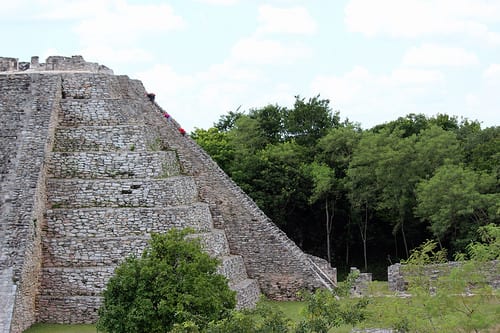
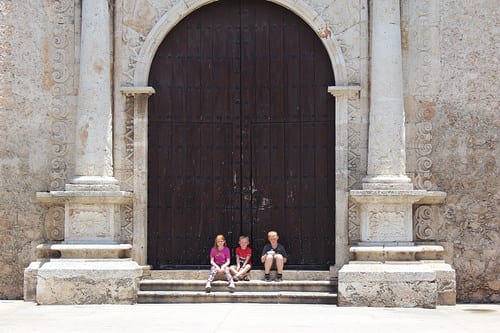
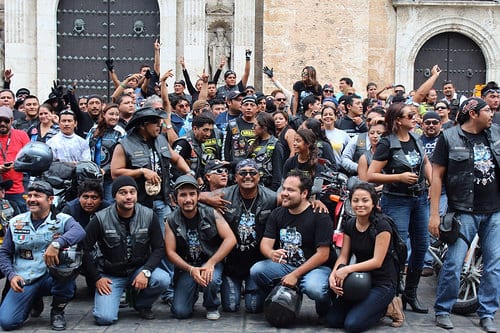
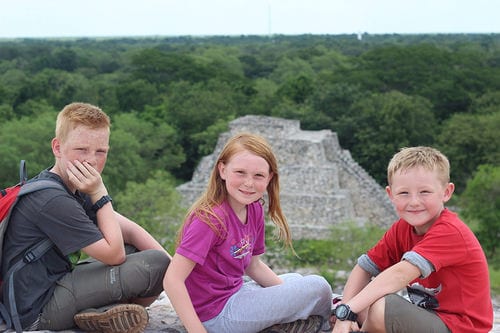
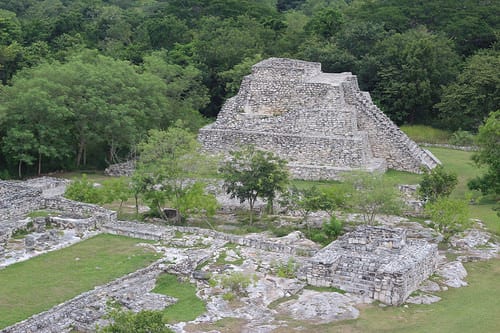
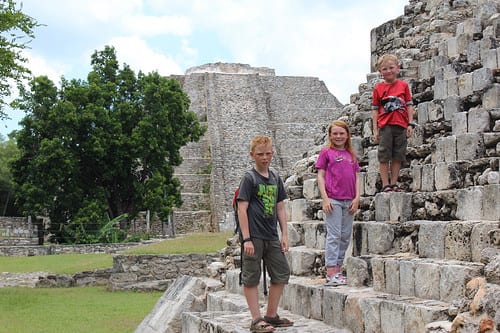
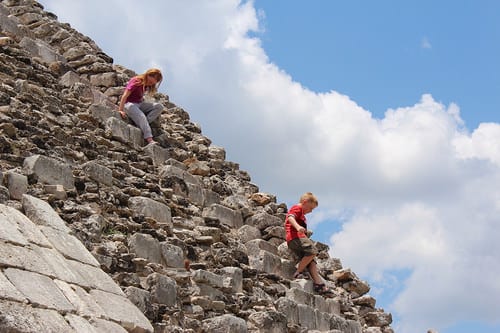
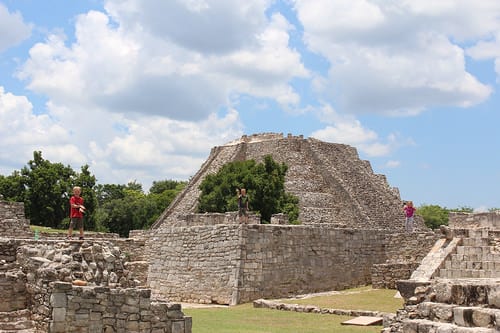

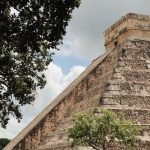
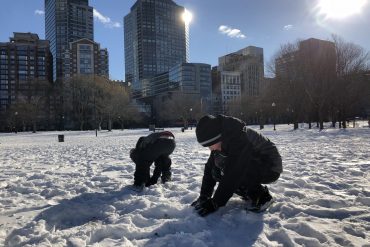
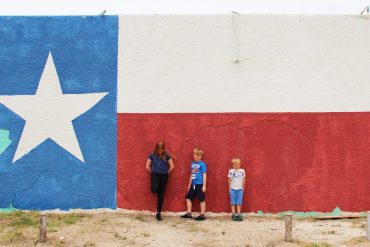
Comments are closed.